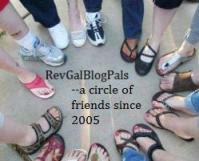Here are a couple of my most recent comments:
 The Dovekeepers by Alice Hoffman
The Dovekeepers by Alice HoffmanMy rating: 4 of 5 stars
I couldn't put this book down! Alice Hoffman has imagined the lives of four women who found themselves living at Masada in 70-73 C.E. The novel is broken into 4 parts, each part of the story told from one of the women's perspectives. The tragedy and triumph of Masada is brought to life through the lives of these women. Hoffman's writing is beautiful. Her descriptions of sight, sound, and sense bring the reader to the place and time. It's clear that Hoffman has thoroughly researched the time period and the culture of the first century Jewish community and its attempt to survive amid the onslaught of Rome. I will admit that I think the book was a tad too long, but I was sorry when it ended!
View all my reviews
My rating: 4 of 5 stars
This was mostly a fascinating story, but it was also partly a nostalgic trip. Although I was born the year that the TV series "Adventures of Rin-Tin-Tin" first aired, I do remember watching black and white episodes of the show as a youngster. I did not have any idea however, that there had been a real dog named Rin Tin Tin, and I had no idea of the immensity of the Rin Tin Tin persona (if a dog can be said to have a persona!) In some ways this is a sad story: Lee Duncan, the WWI soldier who rescued Rin Tin Tin and his sister Nanette in France, was singularly possessed by the dog, and by the idea of the dog. When he died, he was still trying to make his dreams come true. Later, Bert Leonard, Lee's heir apparent, died a broken man after his efforts to revive the legend failed. Yet there is a lot of inspiration in this story. Two intelligent men seized opportunity and ran with it as long as they could.
I learned quite a bit from this book too. This story is in part the story of the transformation of animals, and dogs in particular, from working animals to family members. At the start of the 20th century, dogs rarely lived inside the home. They were relegated to the shed or the back yard or to a kennel. They were not considered pets; rather dogs had a job to do - herd animals, protect property, not be a companion or playmate. After WW1 and during the next decade or so, the dog/human relationship changed. As Rin Tin Tin and other animal stars hit it big in Hollywood, the public began to see dogs as companions. By the middle of the century, dogs and other animals had moved into the house, and had become family members. Another fascinating set of facts was the way that the US military built its canine corps. During WW1 other countries, Germany especially, had been using dogs on the battlefield. The US had none, and eventually managed to cobble together a program for training dogs for military purposes. After the war, the program was disbanded, and when WWII started there still was no established military canine program. So the US Army solicited the public for dogs. It was the height of patriotism to donate your family pet to the military training program. The dogs were sent to training camps and those that made the grade were sent overseas to serve as bomb sniffers, rat catchers, messengers, and suicide bombers. I also enjoyed the accompanying historical background of the movie and early TV industries, and it was fun to remember the various TV shows mentioned - the Lassie TV series (Jeff AND Timmy), Circus Boy, etc.
It was clear from the book that Susan Orlean was extremely invested in the Rin Tin Tin story. Her investigations were thorough, and she was clear about ambiguities and contradictions in the records. All in all, this was a good read!
I learned quite a bit from this book too. This story is in part the story of the transformation of animals, and dogs in particular, from working animals to family members. At the start of the 20th century, dogs rarely lived inside the home. They were relegated to the shed or the back yard or to a kennel. They were not considered pets; rather dogs had a job to do - herd animals, protect property, not be a companion or playmate. After WW1 and during the next decade or so, the dog/human relationship changed. As Rin Tin Tin and other animal stars hit it big in Hollywood, the public began to see dogs as companions. By the middle of the century, dogs and other animals had moved into the house, and had become family members. Another fascinating set of facts was the way that the US military built its canine corps. During WW1 other countries, Germany especially, had been using dogs on the battlefield. The US had none, and eventually managed to cobble together a program for training dogs for military purposes. After the war, the program was disbanded, and when WWII started there still was no established military canine program. So the US Army solicited the public for dogs. It was the height of patriotism to donate your family pet to the military training program. The dogs were sent to training camps and those that made the grade were sent overseas to serve as bomb sniffers, rat catchers, messengers, and suicide bombers. I also enjoyed the accompanying historical background of the movie and early TV industries, and it was fun to remember the various TV shows mentioned - the Lassie TV series (Jeff AND Timmy), Circus Boy, etc.
It was clear from the book that Susan Orlean was extremely invested in the Rin Tin Tin story. Her investigations were thorough, and she was clear about ambiguities and contradictions in the records. All in all, this was a good read!












